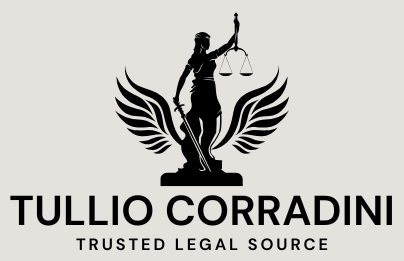Introduction
The Supreme Court of Canada (“SCC”) granted depart to John Aquino, 2304299 Ontario Inc., Marco Caruso, Giuseppe Anastasio a.k.a. Joe Ana and Lucia Coccia a.k.a. Lucia Canderle (“John Aquino et al.”) on January 19th, 2023 to charm an Ontario Court of Enchantment (“ONCA”) determination, Ernst & Young Inc v Aquino, 2022 ONCA 202, from March 10th, 2022. The appeal situation, John Aquino, et al. v Ernst & Younger, in its capacity as Courtroom-Appointed Keep an eye on of Bondfield Construction Business Minimal, et al., issues the doctrine of corporate attribution and transfers at undervalue in the context of the Bankruptcy and Insolvency Act, RSC, 1985, c B-3 (“BIA”).
Facts
The main provision at the main of this scenario revolves all over portion 96 of the BIA. Part 96 contemplates the standards for voidable transfers at undervalue. It reads:
“A courtroom may possibly declare that a transfer at undervalue is void as against, or, in Quebec, may possibly not be established up against, the trustee – or purchase that a bash to the transfer or any other person who is privy to the transfer, or all of all those folks, pay back to the estate the difference amongst the worth of the thing to consider received by the debtor and the value of the consideration provided by the debtor.”
Pursuant to segment 96, courts can order events to return specific transferred home if the benefit or consideration presented proves inadequate and the function of the transfer possesses an intent to defraud, defeat, or hold off creditor(s). The scenario at bar consists of Bondfield Development Enterprise Minimal (“BCCL”) and Forma-Con Construction (“FCC”), BCCL’s affiliate. BCCL is one of Ontario’s major community infrastructure building corporations that participated in tasks these types of as Toronto’s Union Station and St. Michael’s Healthcare facility.
As a consequence of liquidity issues commencing in 2015, BCCL and FCC hired Ernst & Young Inc (“EY”) to assessment the corporations’ fiscal turmoil. EY underscored that liquidity problems centred close to money movement. Performing on EY’s findings, BCCL’s collectors begun to phone loans.
BCCL and FCC eventually pursued restructuring vis-à-vis the Companies’ Creditors Arrangement Act, RSC, 1985, c C-36. EY, the appointed keep an eye on and trustee, parsing BCCL and FCC’s monetary studies, understood that BCCL deployed wrong invoices to illegitimately pay above $35,000,000 to non-arm’s duration functions (FCC transferred above $11,000,000). These transfers succeeded underneath the authorization and supervision of John Aquino (BCCL and FCC’s president) and his associates.
Investigation
Do these transactions fall inside the scope of transactions at undervalue pursuant to portion 96? The ONCA would seem to assume so.
Section 96(1) of the BIA mandates that privies to the transfers at undervalue (in this circumstance, BCCL and FCC) have to include the deficiency of the transaction at undervalue. Courts may perhaps also void these undervalued transfers.
John Aquino et al. set forth the argument that the transactions in question do not invoke part 96. In distinct, they argue that because the two BCCL and FCC have been fiscally steady at the time of these transfers, these transfers did not render the debtor organizations bancrupt. Additionally, they articulate that an intention to defraud, defeat or hold off collectors can not be imputed to the debtor firms. John Aquino et al. relied on Canadian Dredge & Dock Co v The Queen, [1985] 1 SCR 662 (“Canadian Dredge”), a landmark SCC case clarifying the doctrine of corporate attribution. This circumstance specified that the doctrine does not implement if the fraudulent steps did not benefit the corporation. In gentle of these facts, John Aquino et al. claimed that portion 96 does not capture these transfers.
Both the trial court docket and ONCA rightly adopted a far more holistic evaluation of area 96 to the information. For starters, Justice Dietrick of the Commercial Listing observed that the debtor companies’ economic statements outlining the fiscal health of BCCL and FCC have been truly issue to litigation. Hence, these statements can not be conclusively relied on to build the precision of the debtors’ correct financial placement. Next, badges of fraud can buttress the existence of an intent to defraud, defeat or delay collectors: e.g. unusual accounting methods, numerous transfers of exorbitant quantities, non-arm’s size connection among the functions, among the others. These badges lead to “a rebuttable presumption” to defraud, defeat or delay.
Agreeing with the demo court’s reasoning, ONCA held that the doctrine of corporate attribution, as outlined by the SCC in Canadian Dredge, requires particular thought in the BIA context. Composing for a unanimous ONCA, Justice Lauwers outlined three principles:
- Courts should be conscious of the legal context when prescribing intent
- Courts should really be mindful of community coverage and of the social reason of holding organizations accountable for their actions
- Courts ought to be conscious of not implementing the doctrine when it contravenes general public interest.
The ONCA argued that the application of the corporate attribution doctrine in the framework of the BIA should really not favor fraudsters’ pursuits in excess of people of lenders. In this case, BCCL and FCC’s illegitimate invoicing method harmed the interests of lenders. Even if Aquino et al. did not possess an intention to defraud the debtor corporations, they harmed respectable claims of lenders. Eventually, the fraudsters shoulder the legal responsibility to provide correct redress to harmless creditors.
Conclusion
This scenario highlights the affect of public plan concerns in the BIA framework. The ONCA turned toward social goal justifications to reduce Aquino from benefitting at the expenditure of lenders, and, in the approach, produced a novel application of the doctrine of company attribution to impute Aquino’s intention to BCCL and FCC.
Canada’s bankruptcy routine has a central intention: clean begins. This regime allows trustworthy but regrettable debtors to discharge money owed and receive a new prospect at economic steadiness.
Through circumventing these ambitions vis-à-vis illegitimate, fraudulent invoicing tactics, John Aquino et al. correctly undermined the integrity of the BIA composition. Professor Anna Lund of the University of Alberta’s school of legislation explains that part 96 of the BIA seeks to “claw back home that ought to be out there to the creditor.” Collectors should not be deprived of their legal legal rights below the individual bankruptcy routine. Now, the playing cards are in the SCC’s hands to figure out creditors’ correct redress. It is probable that the SCC will agree with the ONCA in heightening the function of community plan.











More Stories
Navigating Tax Complexities: The Indispensable Role of Tax Lawyers
Unlocking Business Success: The Role of Corporate Attorneys
Deadline Approaching: Form I-9 Virtual Inspection of Employment Authorization and Identity Documents will End on July 31, 2023